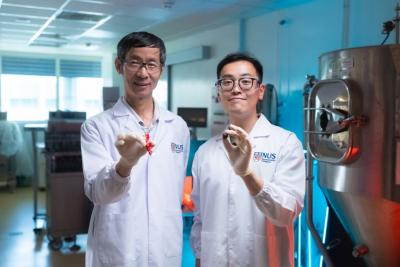Những nhà khoa học NUS tìm ra ứng dụng mới để tái chế tóc người
Activating the fluorescent properties of our hair using heat could convert human hair waste into a functional material for steganography and pollution detection.

Prof Sow Chorng-Haur (left) and Dr Sharon Lim from the NUS Department of Physics observe a glowing laser-engraved hair under UV light through a microscope.
Physicists from the National University of Singapore (NUS) have developed an innovative method of converting human hair waste into a functional material that can be used to encrypt sensitive information or detect environmental pollutants.
On average, a single person can shed anywhere from 50 to 100 strands of hair per day. This contributes to a sizeable amount of waste which may take years to decompose into its natural form, or end up in incinerators, waste streams and dumps which produces toxic fumes including ammonia and sulfur dioxide during the decomposition process. Landfills of hair waste can leach toxic chemicals into bodies of water, harming marine wildlife and potentially lead to algal blooms. Furthermore, human hair can be breeding grounds for pathogens, putting nearby communities at risk of disease outbreaks.
“As the human population increases, there will be increasing pressure to manage human hair waste,” said Professor Sow Chorng-Haur from the Department of Physics under the NUS Faculty of Science. “Instead of sending hair waste to the incinerator or landfill, it is worthwhile to repurpose hair waste for other potential applications.”
See more: here





















